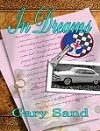Over the next three years, I worked on the story off and on, but mostly off. I was certain I could never write well enough to have something published, so I simply wrote for practice and for my own entertainment. As the story neared completion, I asked several people to “beta read” the manuscript and critique it. The reviews were frustratingly mixed. Women said there was too much car stuff, while men said the plot was lacking in action and was too mushy, so I quickly learned that there was no way to please everyone. It was suggested that I change the story to make it more palatable to either men or women and to forget trying to appeal to both. Since the main story was about relationships, which might appeal more to the ladies, I decided to remove some guy stuff and concentrate more on the characters with hopes of making it a better read for women.
The manuscript languished for another two years while I fiddled with the plot, but with much prodding I eventually decided to attempt marketing the manuscript. After being rejected by one agent, it dawned on me that trying to land an agent was a waste of time. Their understandable goal is to make money, so their focus is in signing talented authors who write for a large audience and who are young enough to have a long writing career. A book written by an old guy, targeted to readers from his generation, doesn’t merit serious attention from successful agents.
I also knew that most large publishing houses will only consider the works of agented writers, so it would be extremely difficult for a new author to place a manuscript before their editors. That left two ways to get the book published. I could self-publish, which meant I would have to assume all the editing, printing, marketing, and promotion costs. That route would only serve to satisfy my ego, and those who know me won’t be surprised by the fact that I’m too frugal to spend money in that way.
The only other option to see my book in print was to shop the story to small publishers, some of whom will accept un-agented manuscripts. The first publisher expressed no interest, but the second one I contacted, Wings e-press, dumfounded me by offering a contract only a few days after asking to see the full manuscript. Their offer was fair, and unlike some unscrupulous publishers they asked no financial investment from me. I would receive no money upfront, but they were willing to invest in my novel to the extent of absorbing all editing, publication and marketing costs for both the e-book and paperback versions. Needless to say, I quickly signed, and they have been wonderful to deal with.
Then the real work began, and it was hectic for a couple of weeks.
While the first editor was busy correcting my grammar, punctuation and typos, I worked with one of their contract artists to design a cover. I was shown samples from several contract artists and selected Robert Stroud to create the cover. I was allowed quite a bit of input in the design, but the final layout was the artist’s responsibility. It took about a week from the day we first talked on the phone until we agreed on the final rendering.
I was amazed by all the work that goes into publishing a book. Three editors reviewed the manuscript before it went off to the printer, and I was horrified to see all the stupid mistakes they caught. When you try to correct your own work, it’s all too easy to overlook the same mistakes every time you read it. I find myself “comma-ly challenged” in a major way, so there were a lot of corrections in that area.
The first editor just laughed at my embarrassment and explained that it’s normal, and that’s why editors are needed. Even after all that work, I’ve spotted a couple of errors in the published version, but then I also found a major typo in a recently released New York Times bestseller.
I was pleased that there were only three paragraphs she requested I change. I did rewrite two of them, as I agreed the editor’s suggested version was better, but I argued and won a debate on the third. However, as I now reread the story after months have gone by, I ask myself why I wrote so many clunky paragraphs! The editors were being too kind to let me get by with some of the weak writing.
After the majority of errors were corrected with the first edit, we had to format for publication. The publisher has a preferred format for their books, and it was different than the way I originally had set up in my computer. Thank goodness Microsoft Word is so versatile!
After completing the edits, deciding what scenes to use for teasers, and writing a synopsis, bio, and other info for promoting, it took about three weeks before it was available in e-published form and a few more weeks until the print copy was released.
Final thoughts tomorrow.
Subscribe to:
Post Comments (Atom)





No comments:
Post a Comment